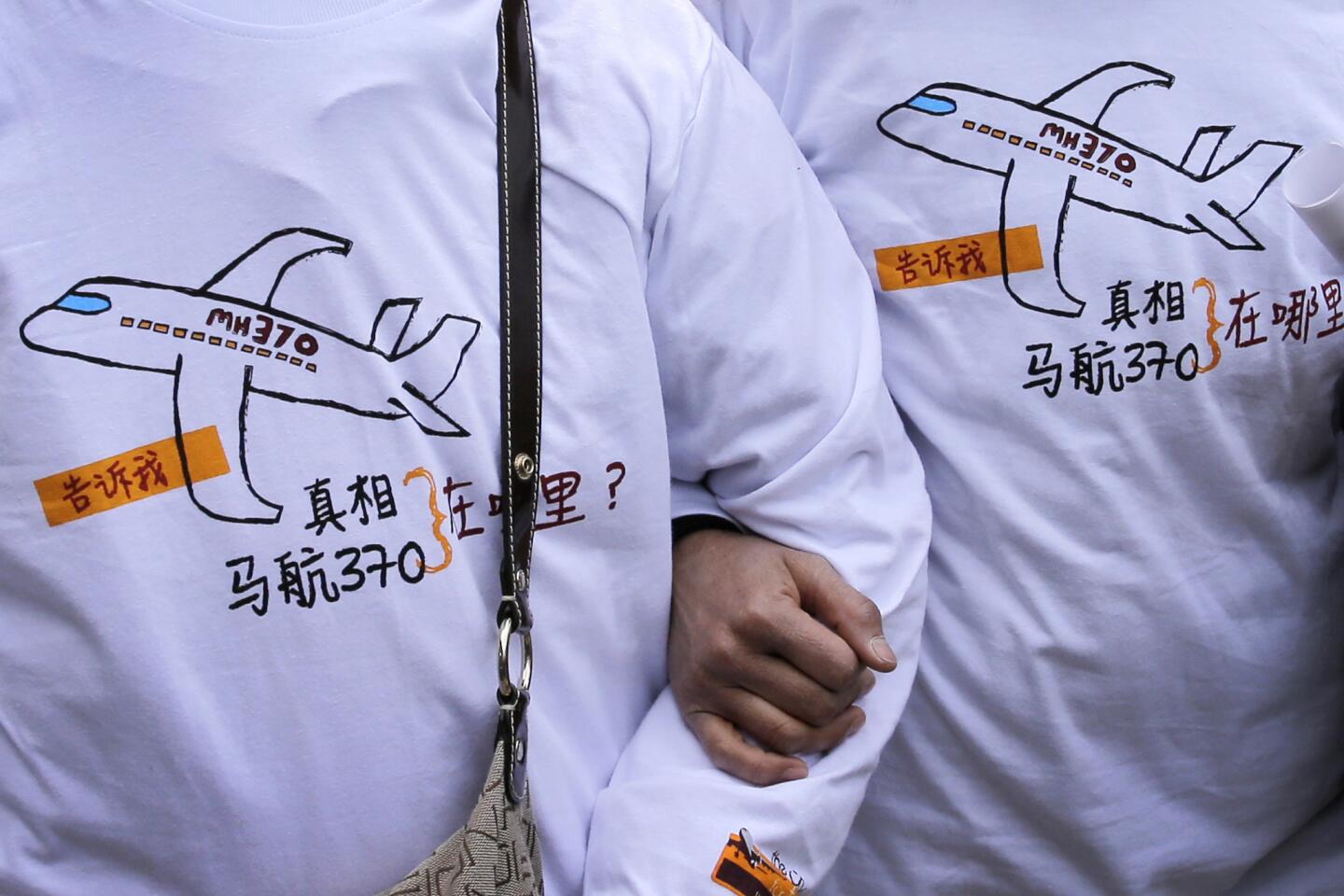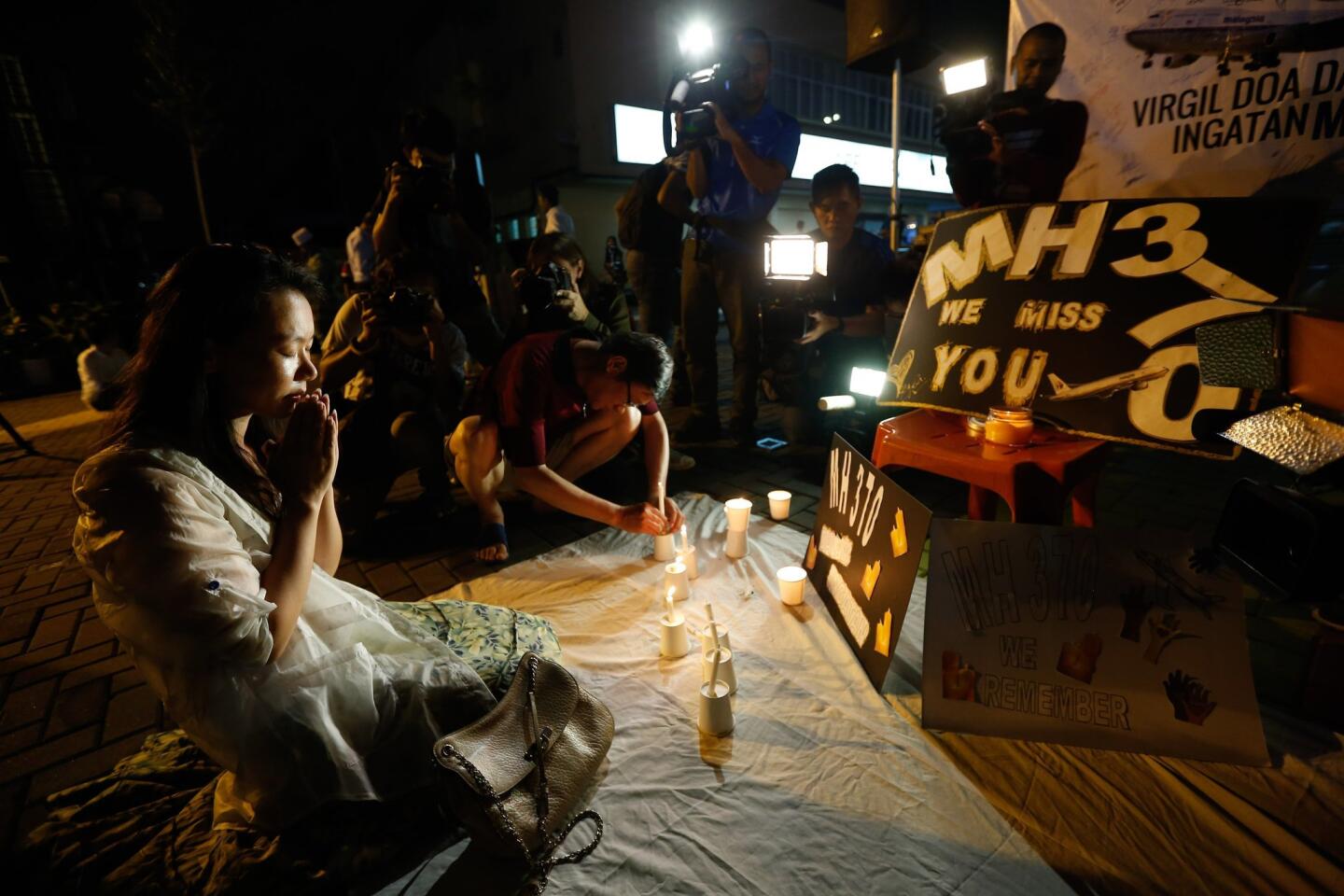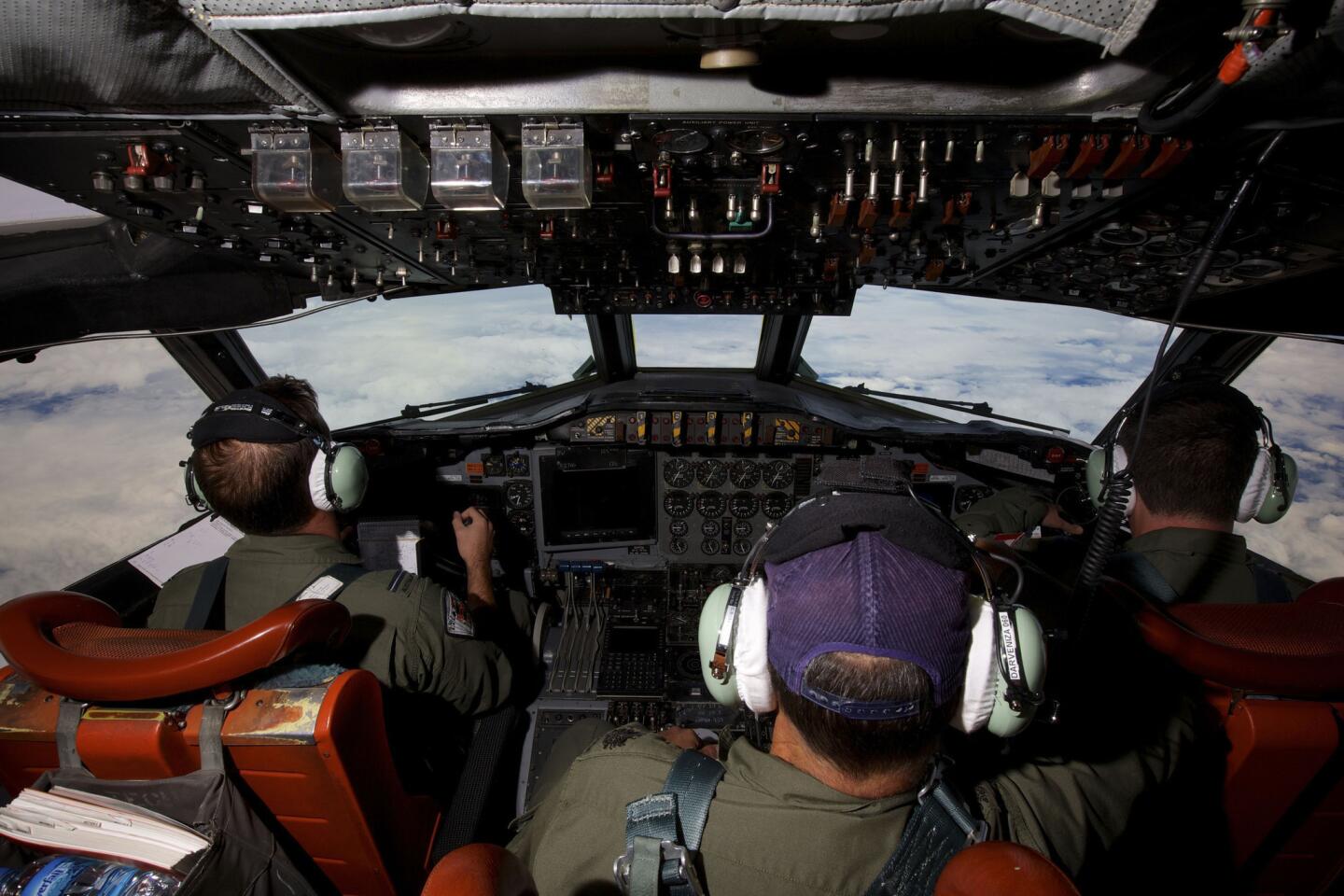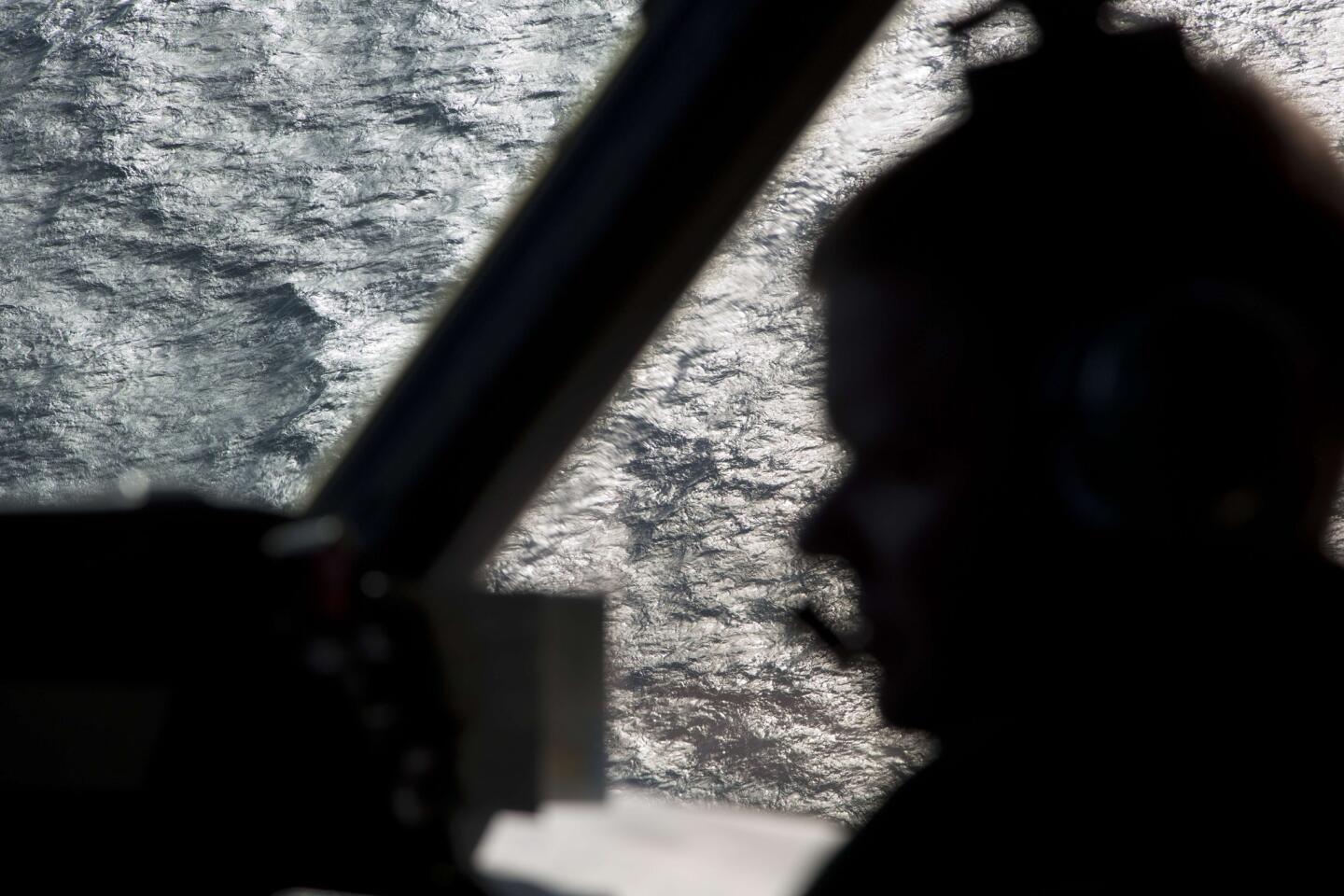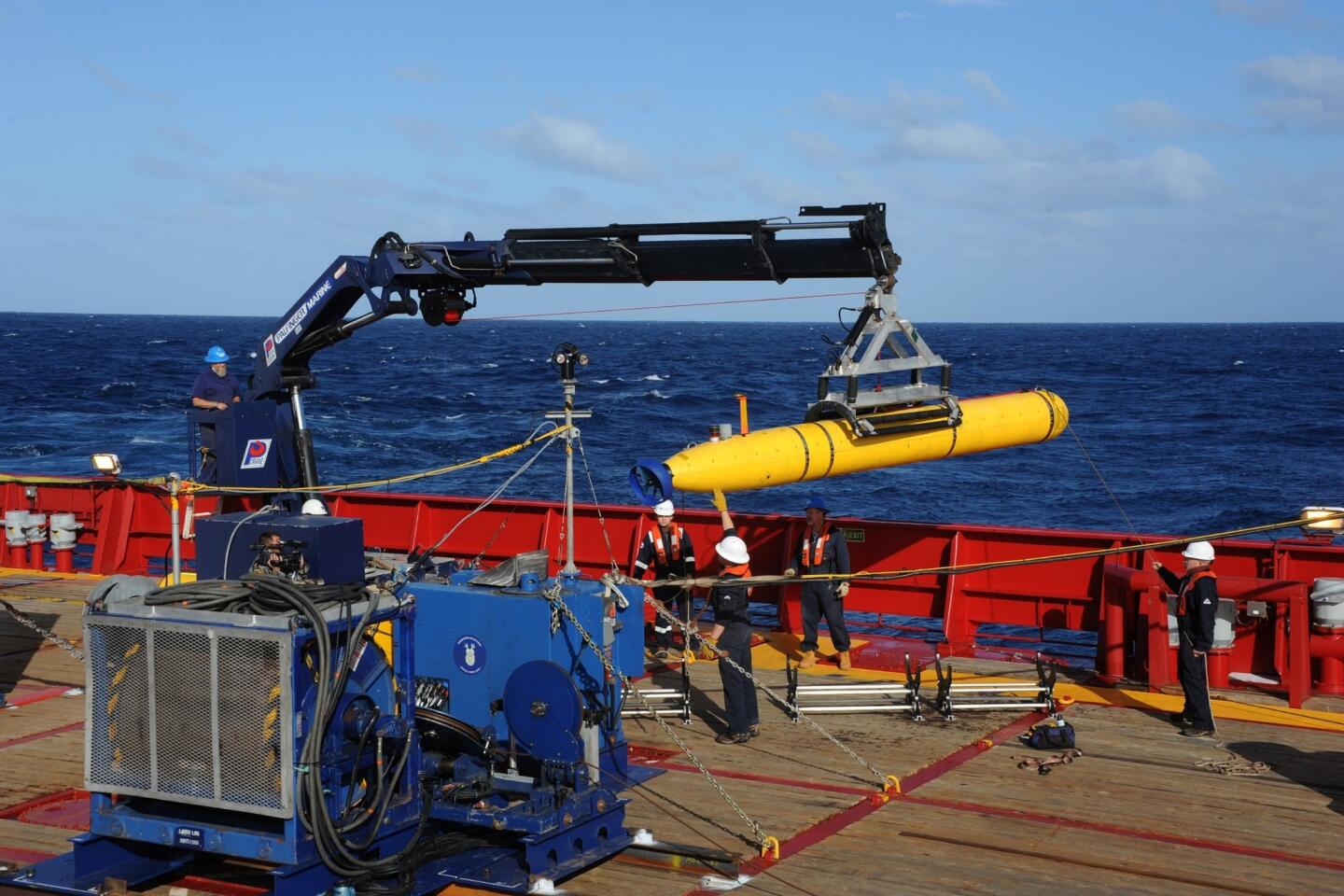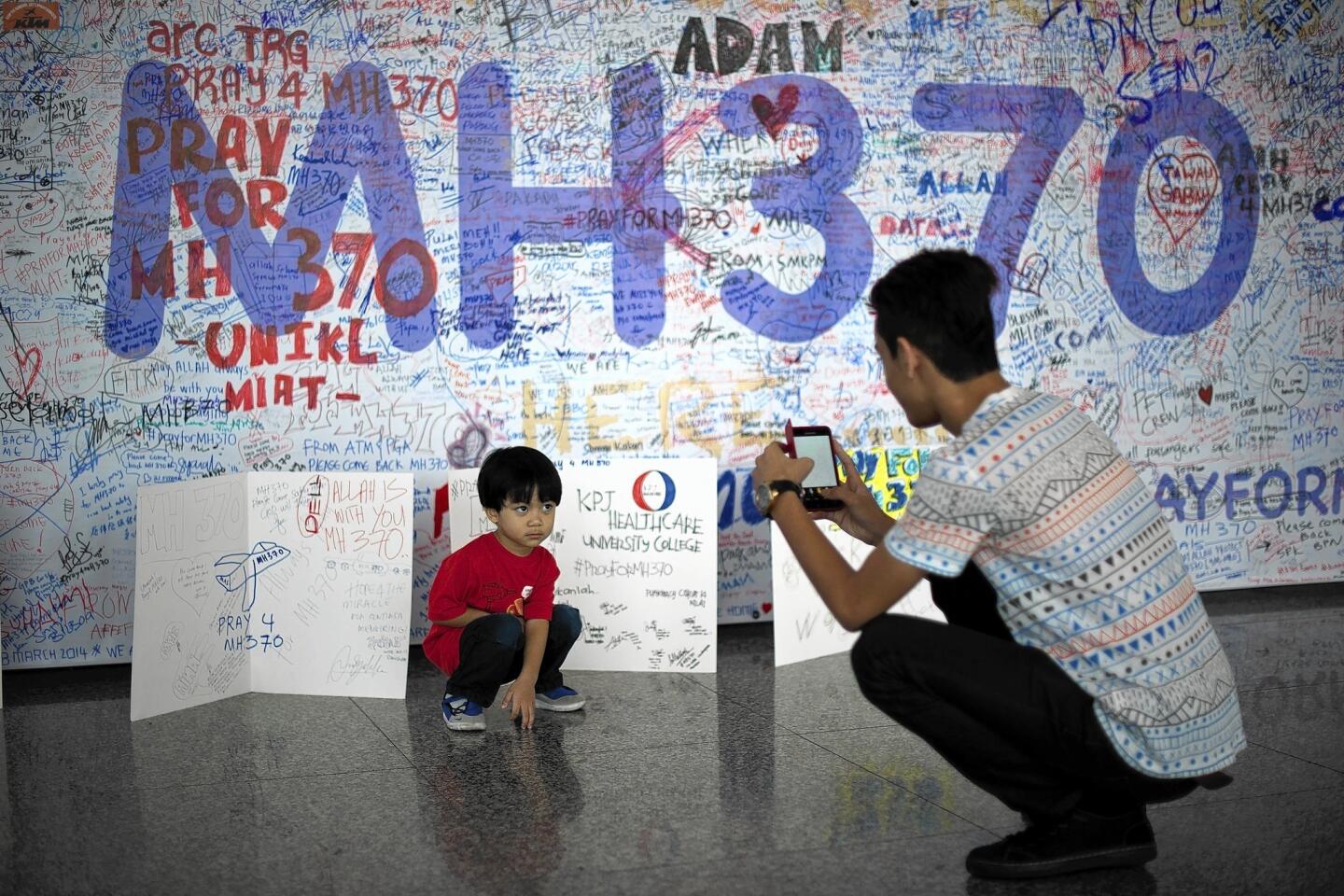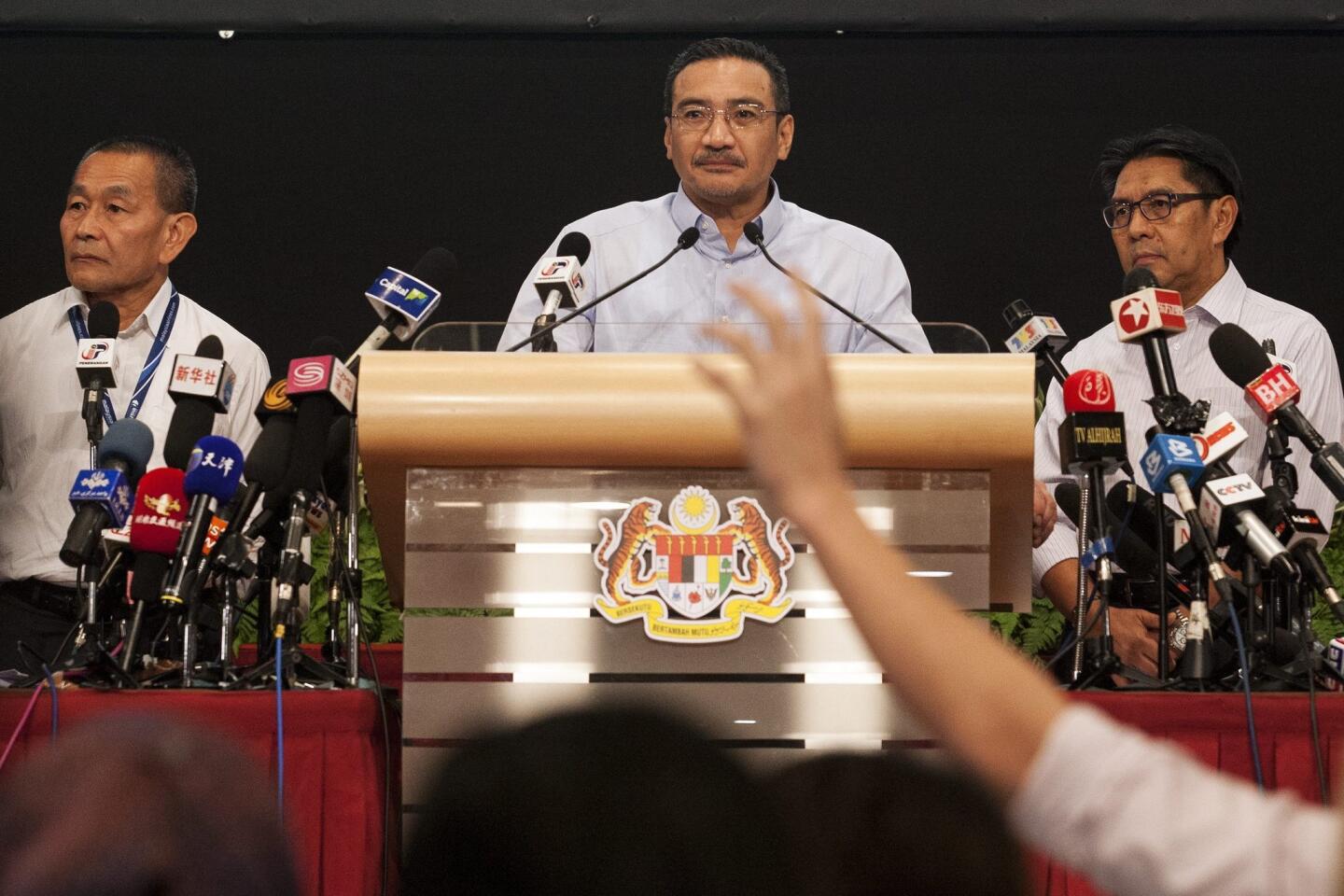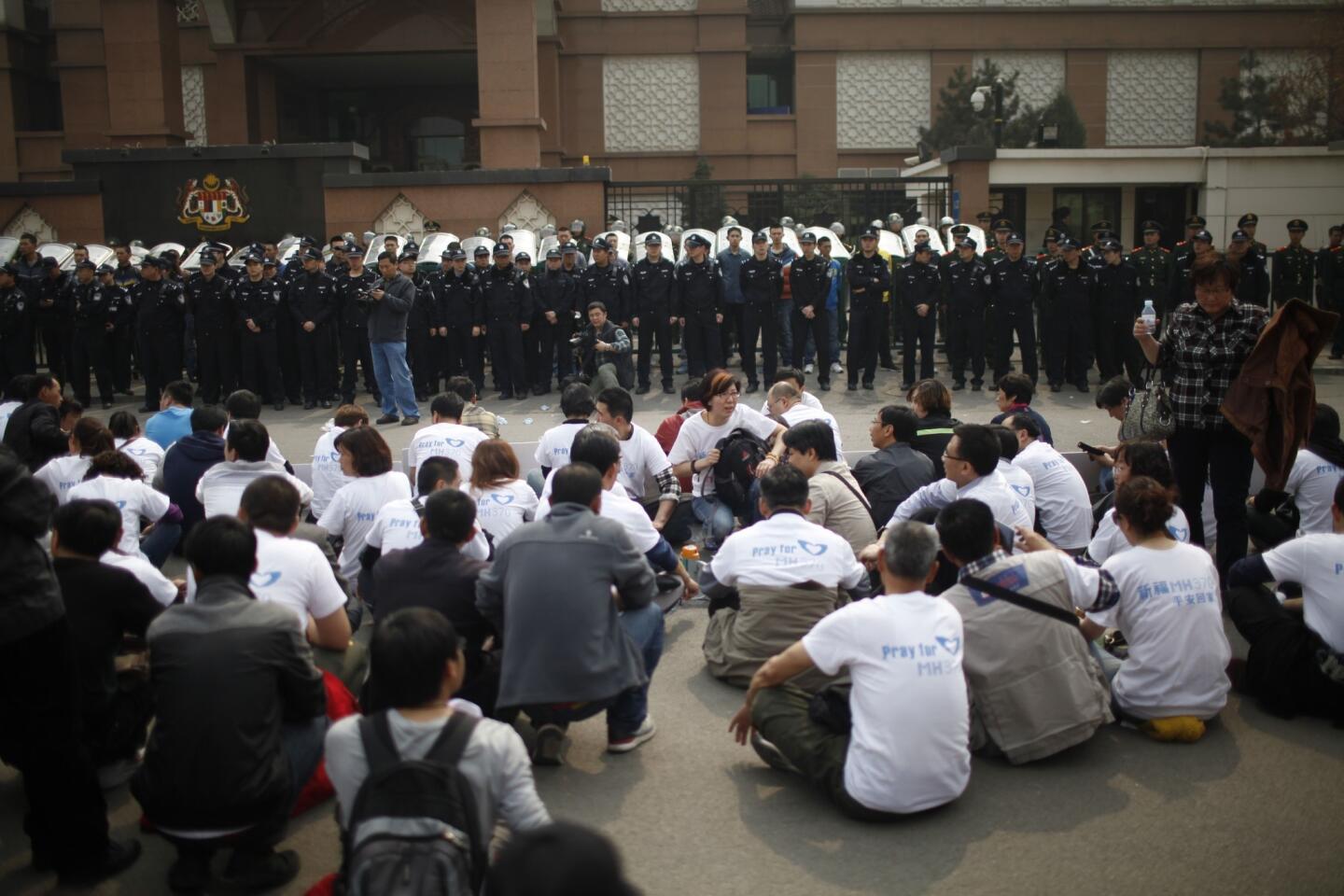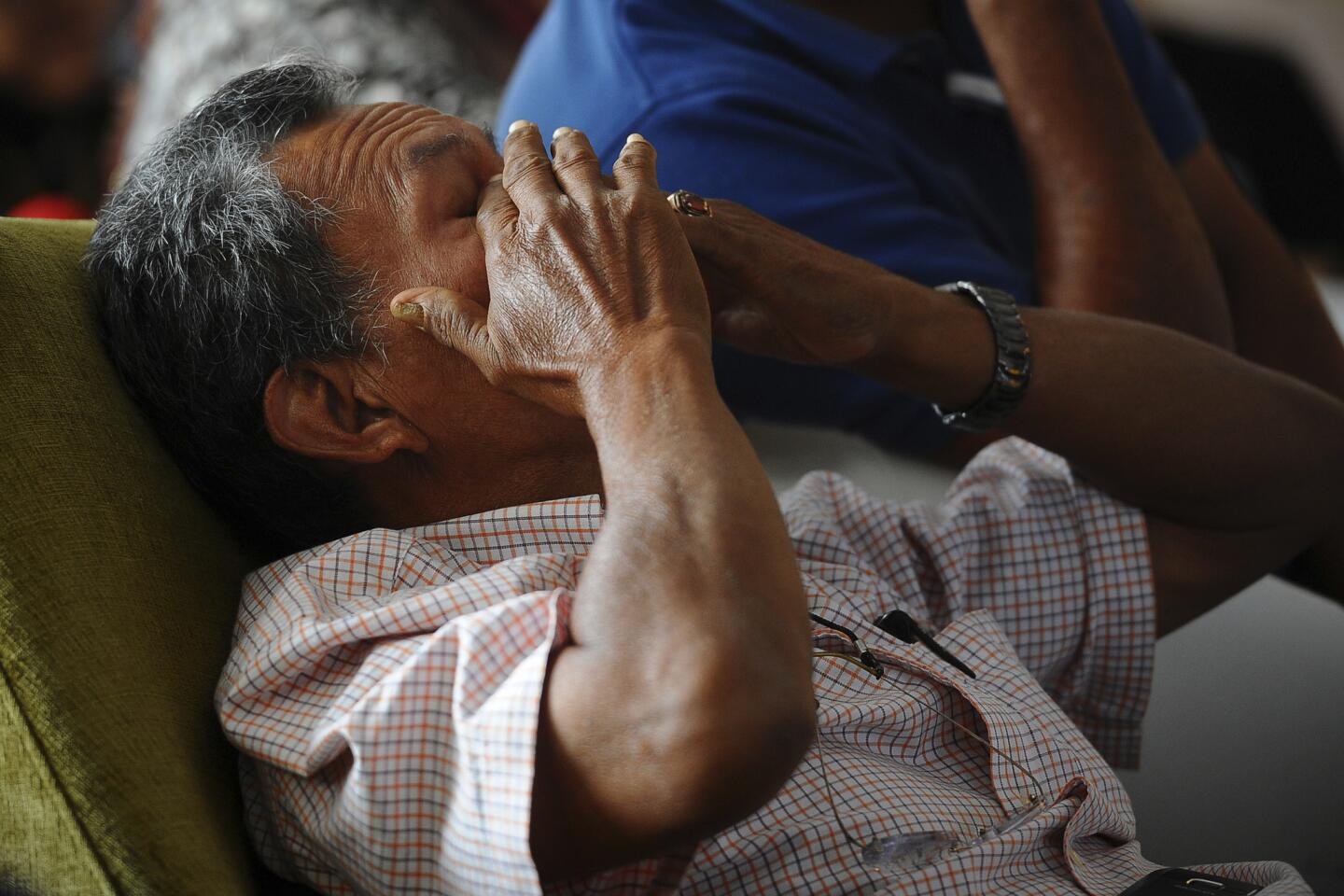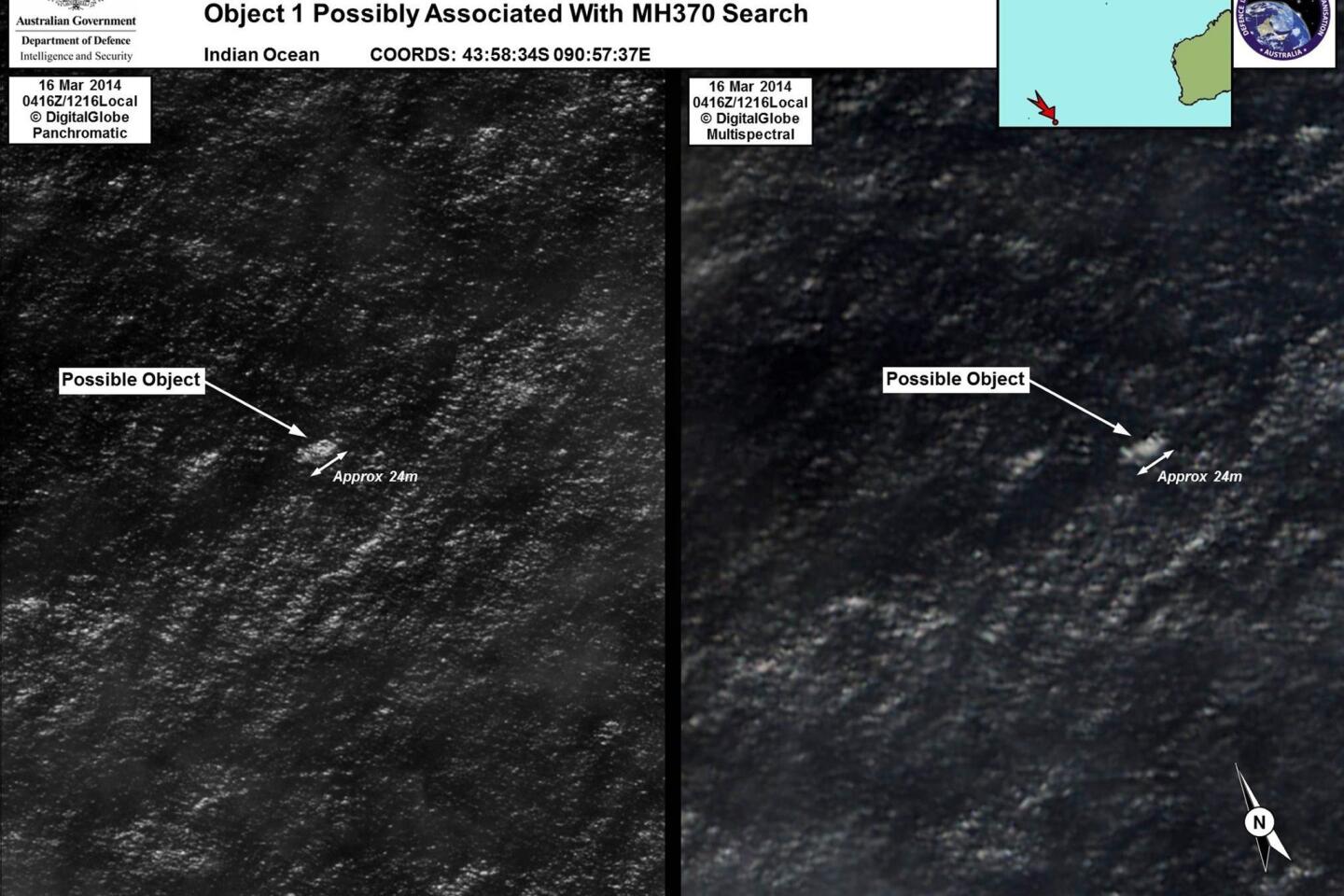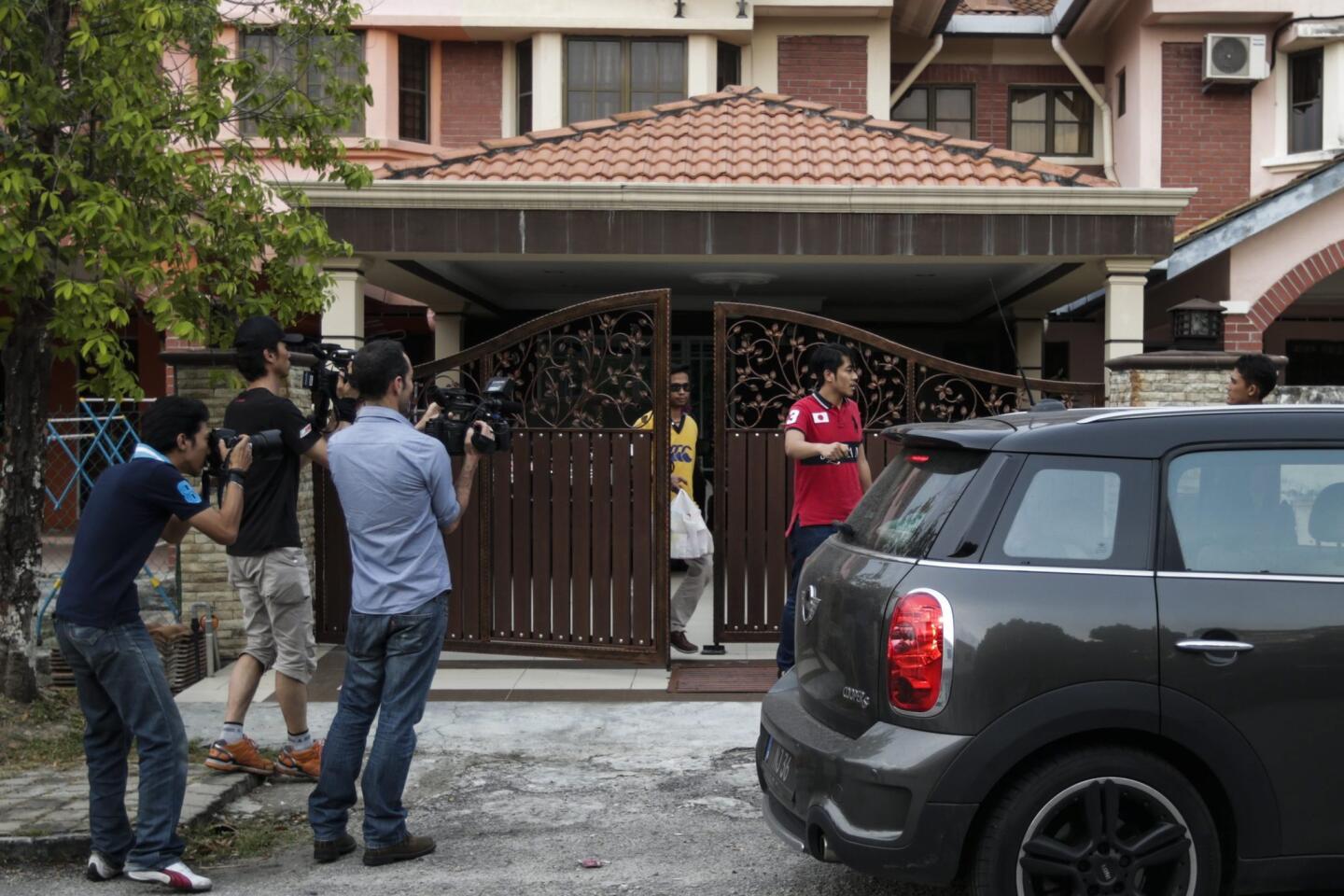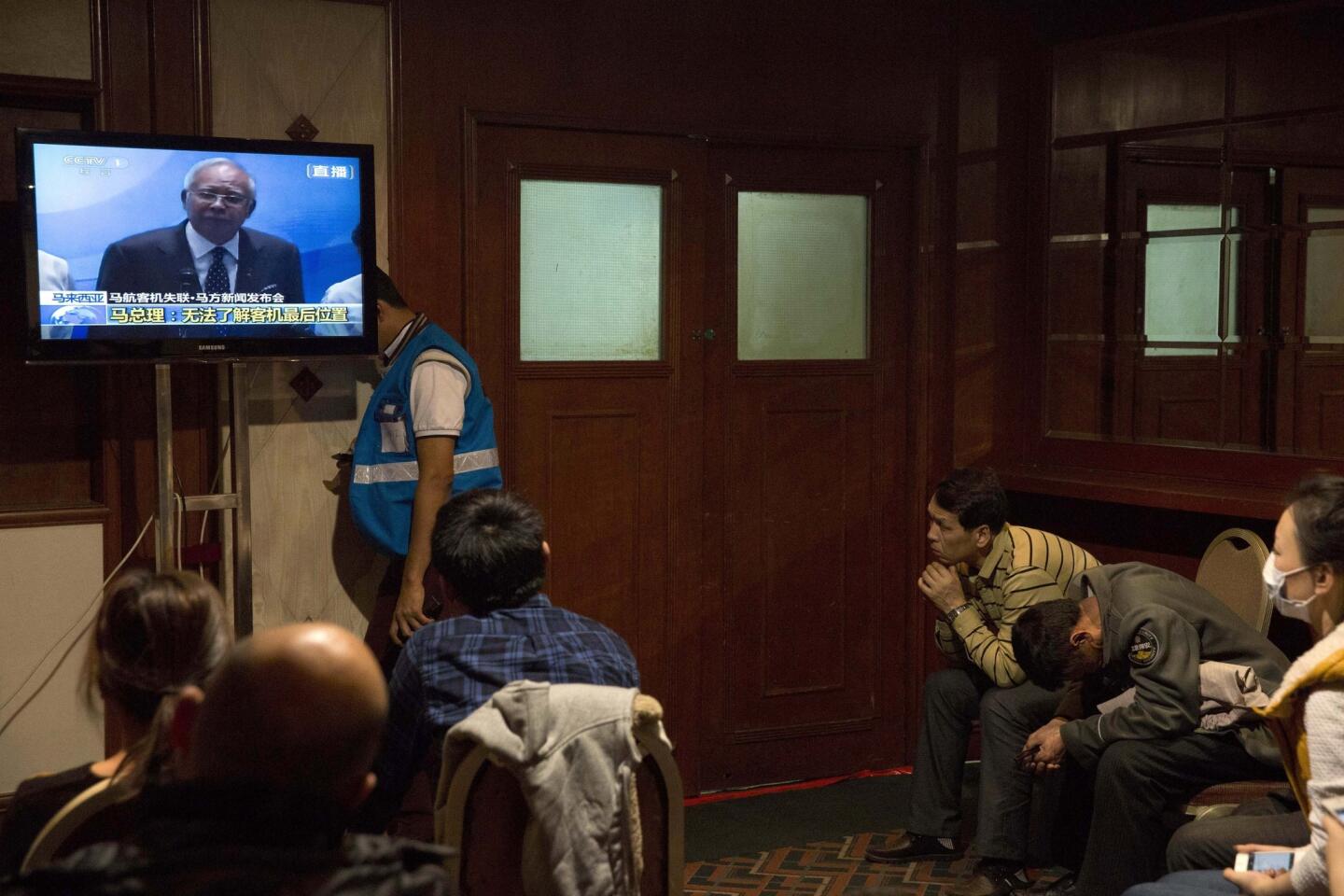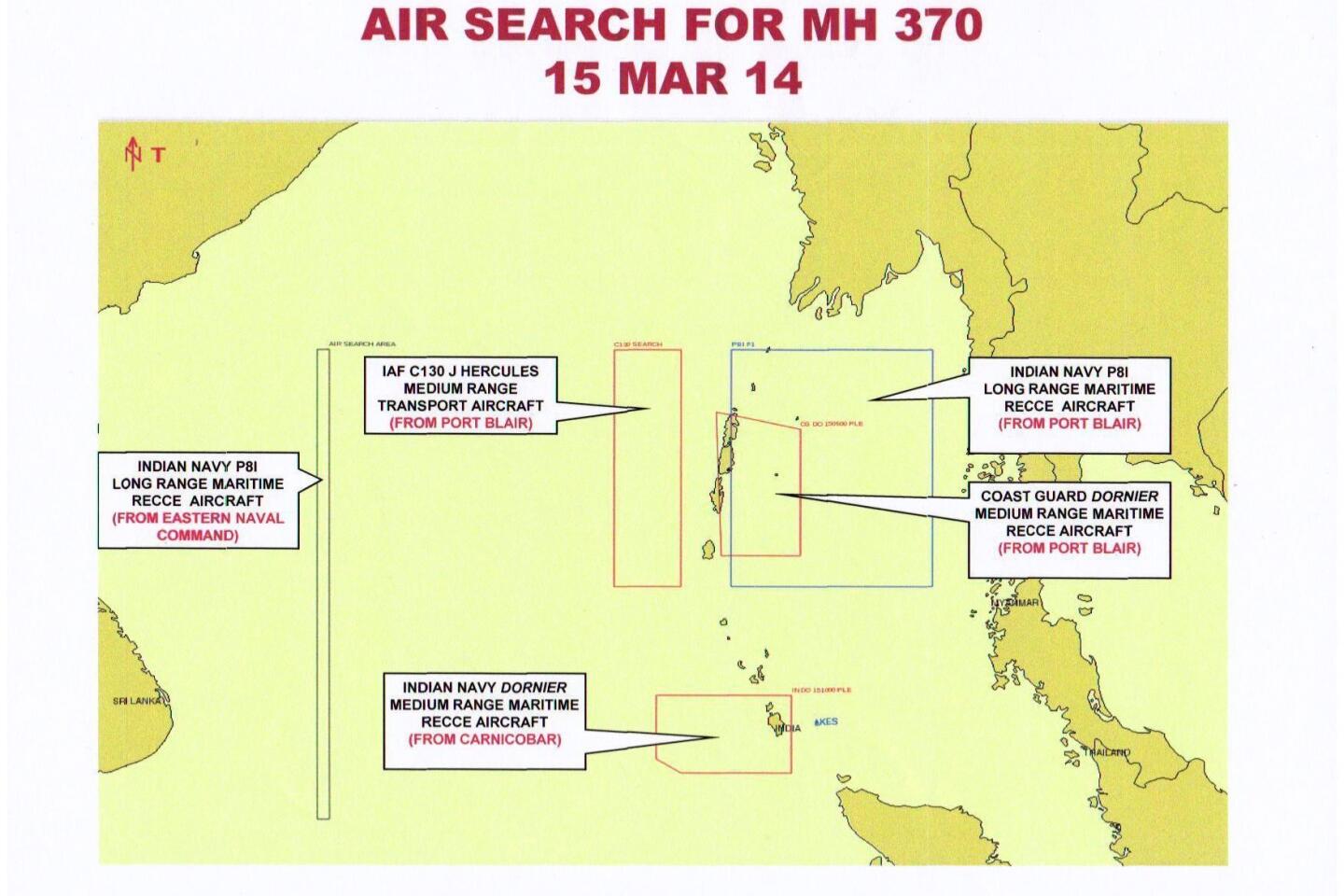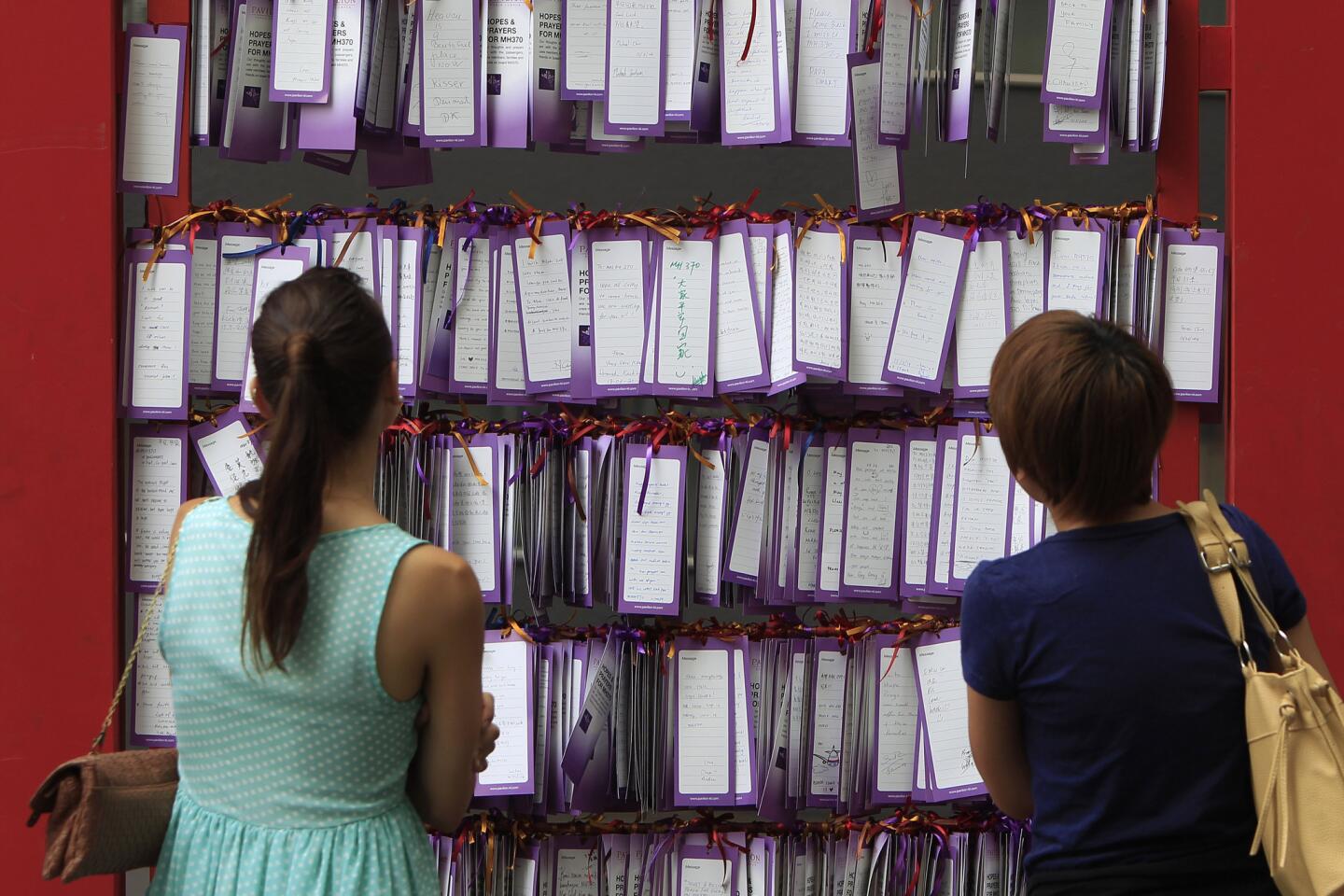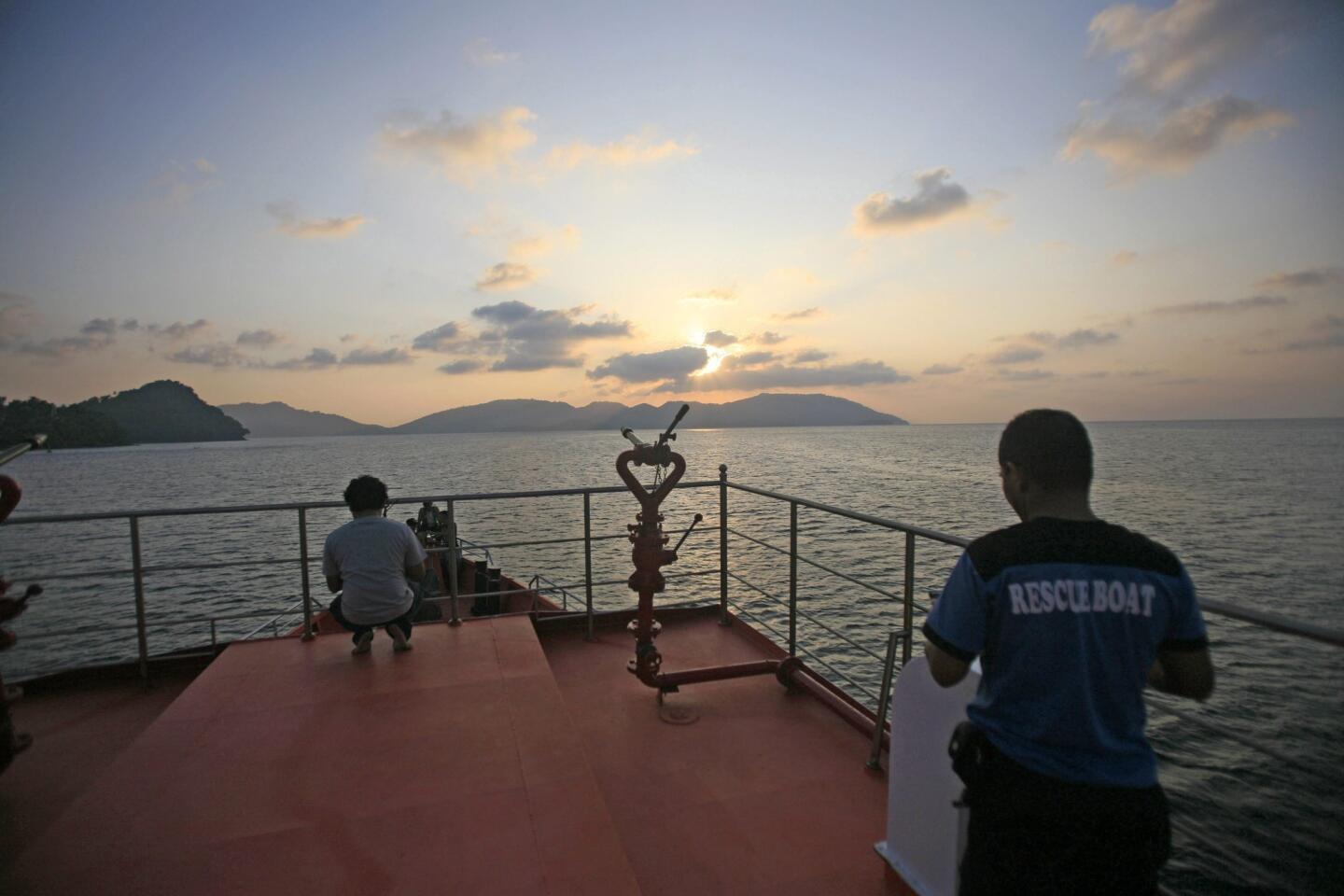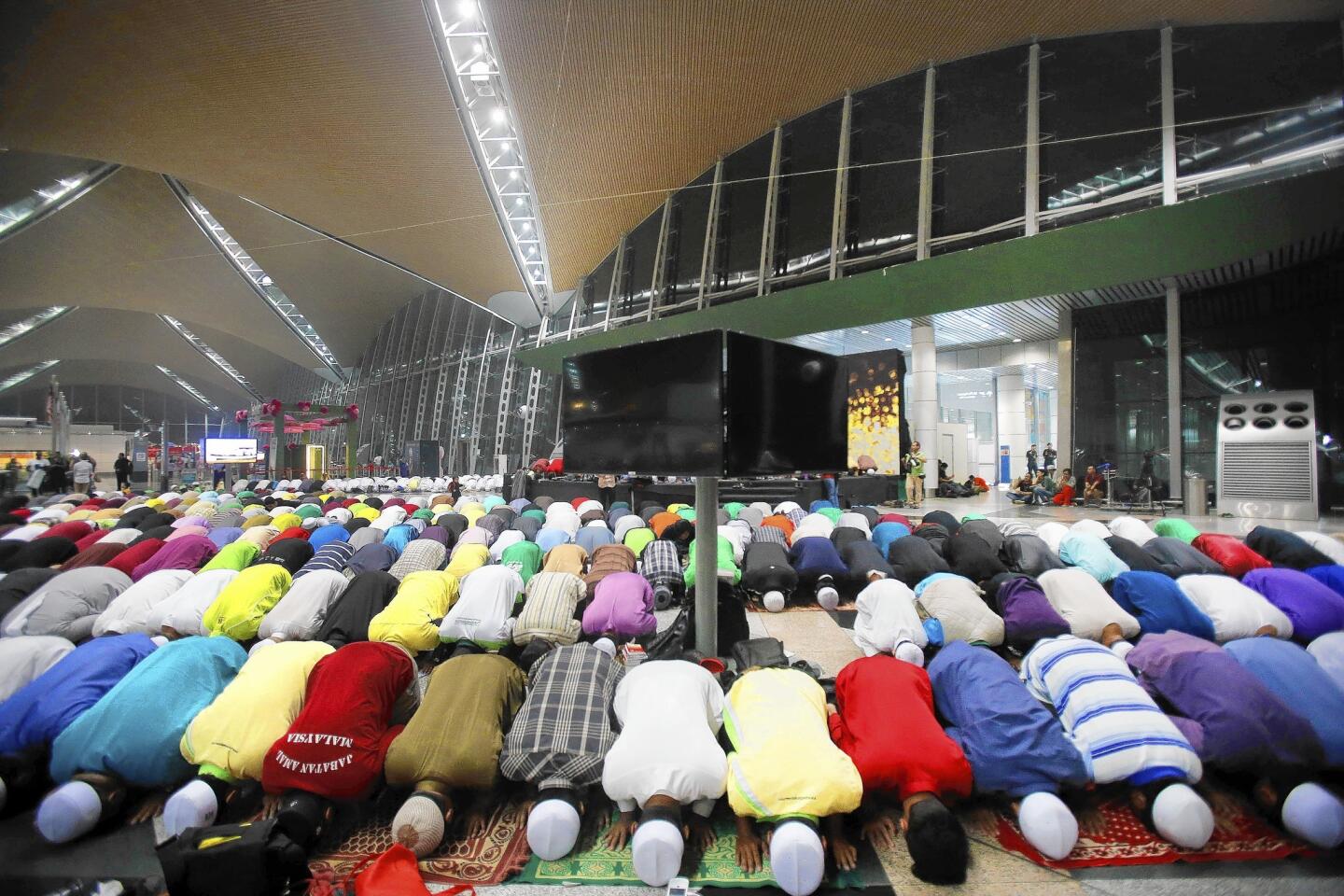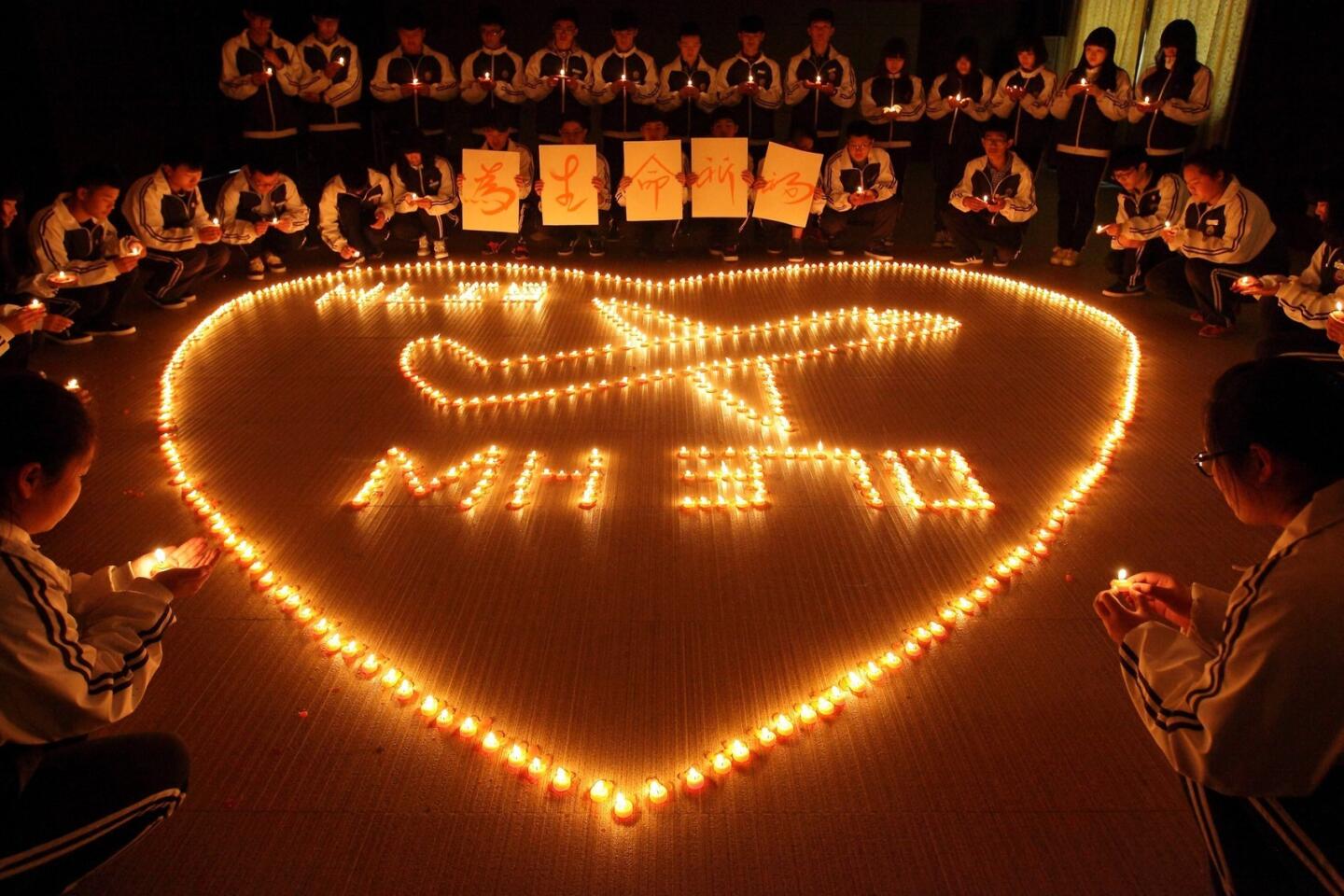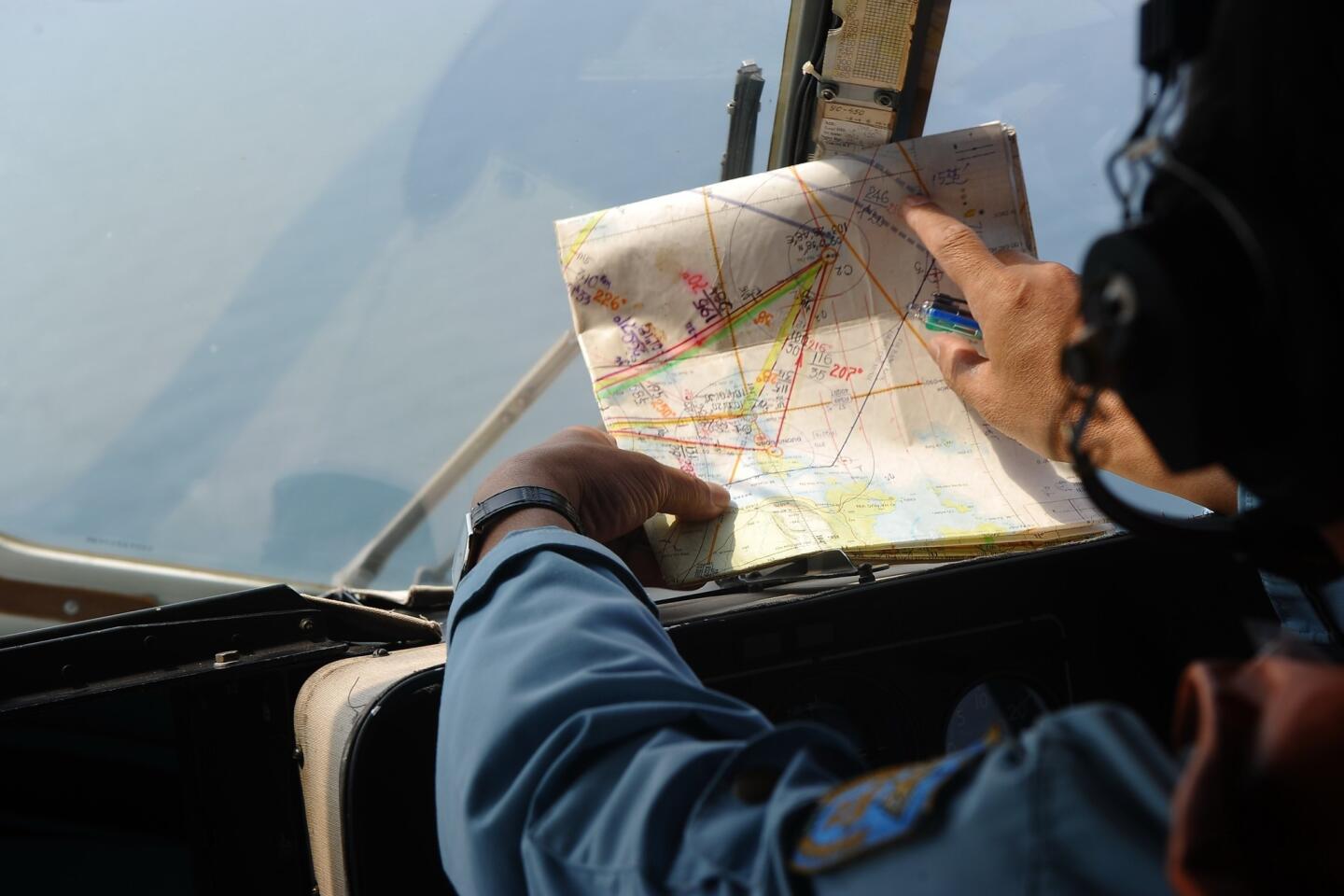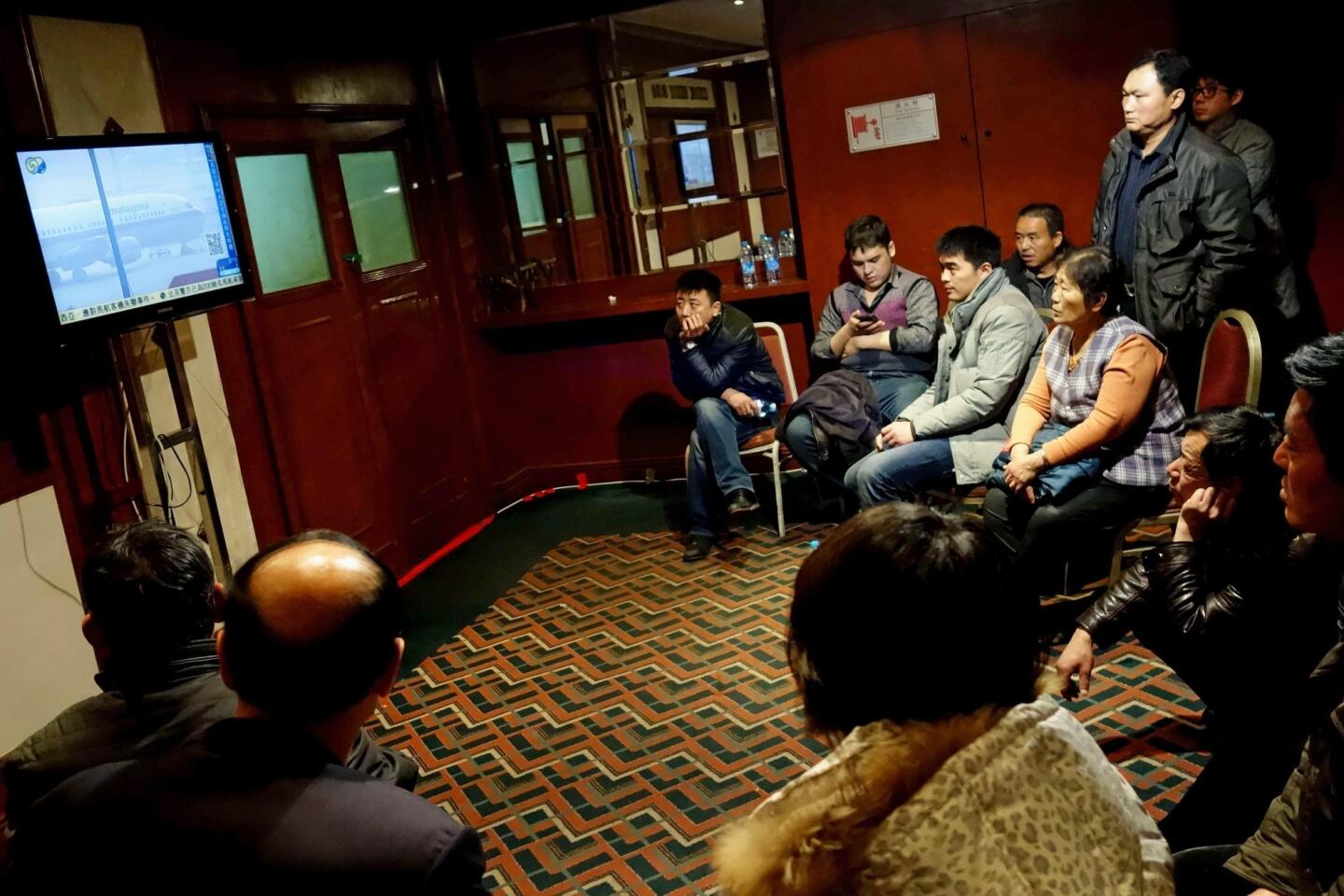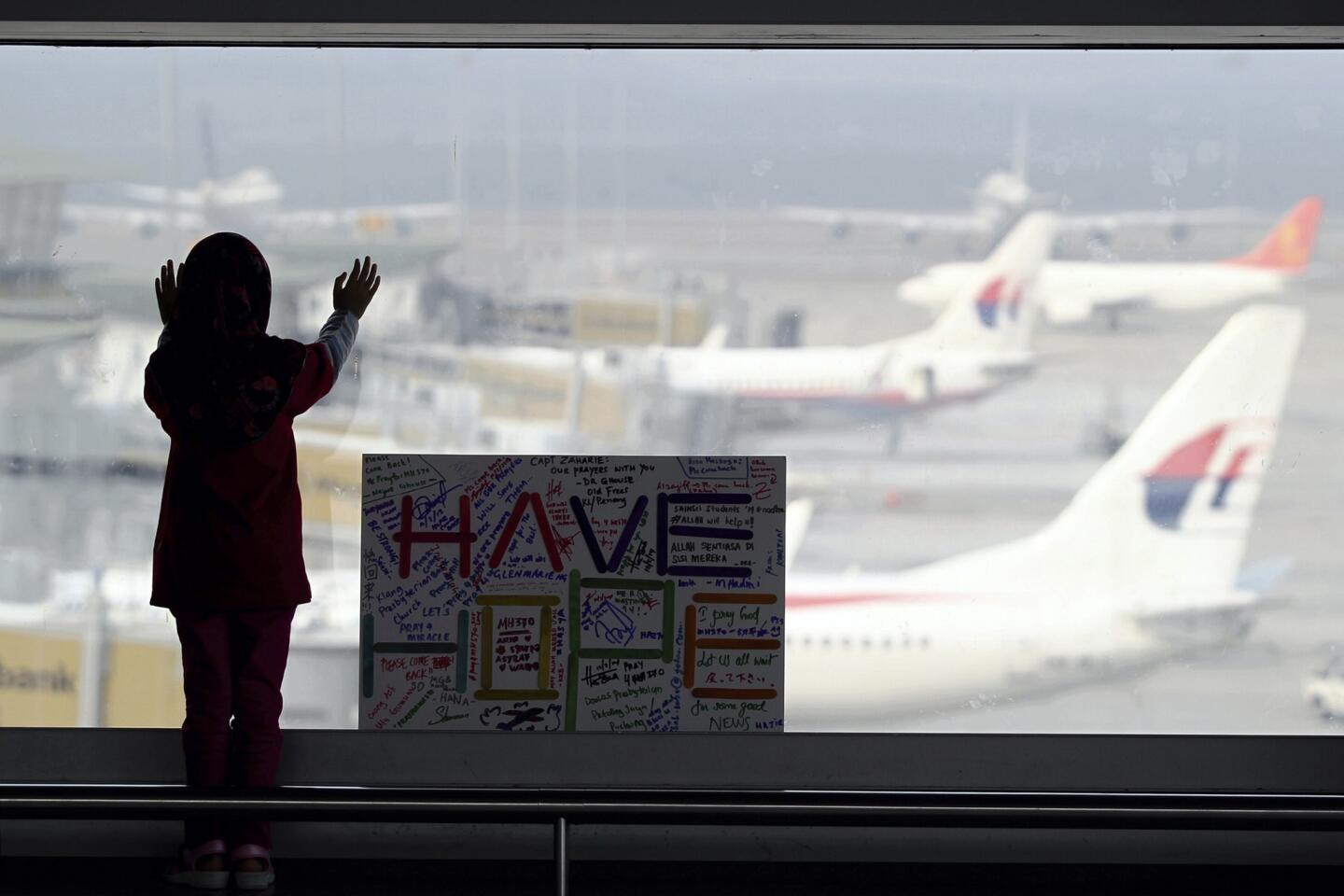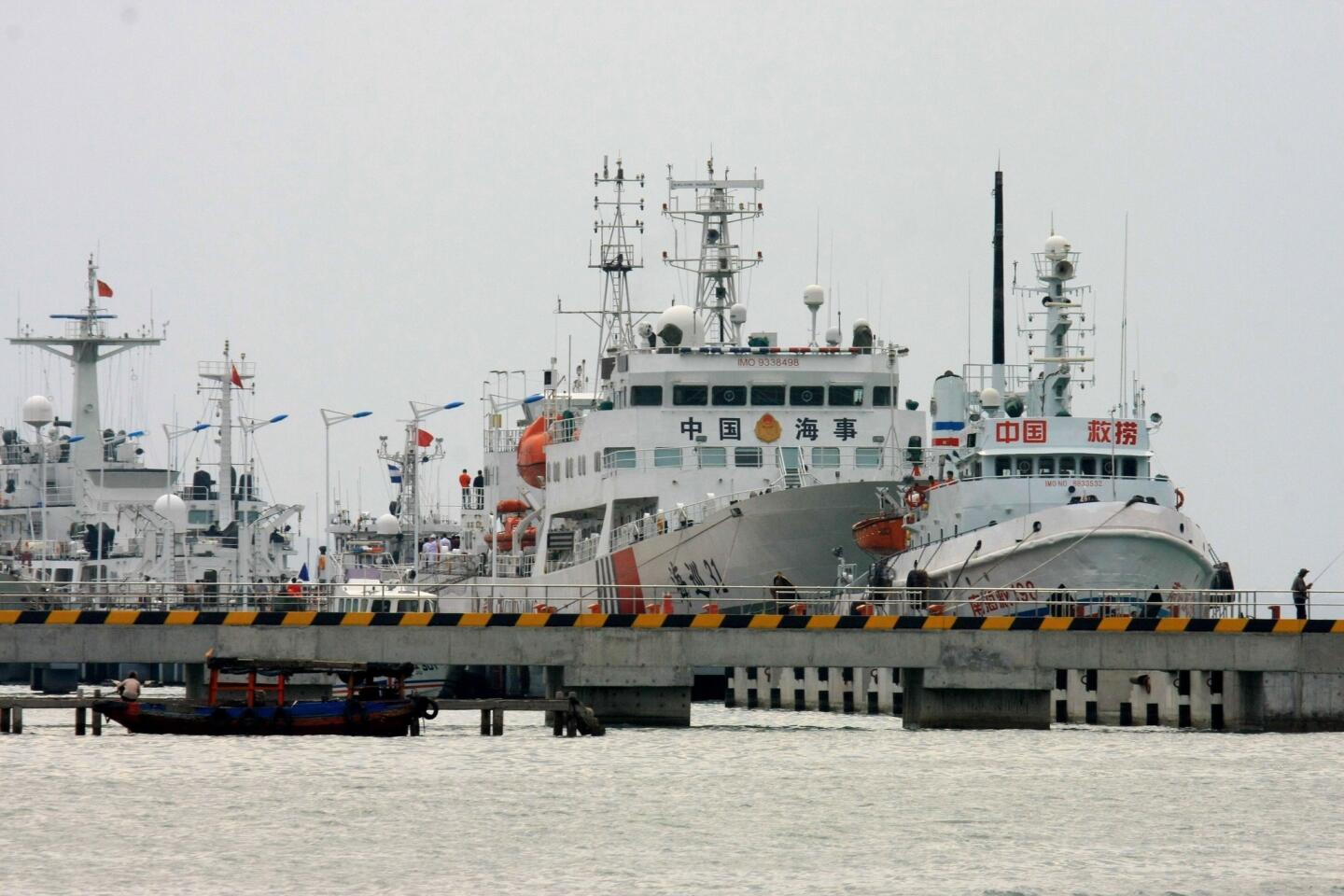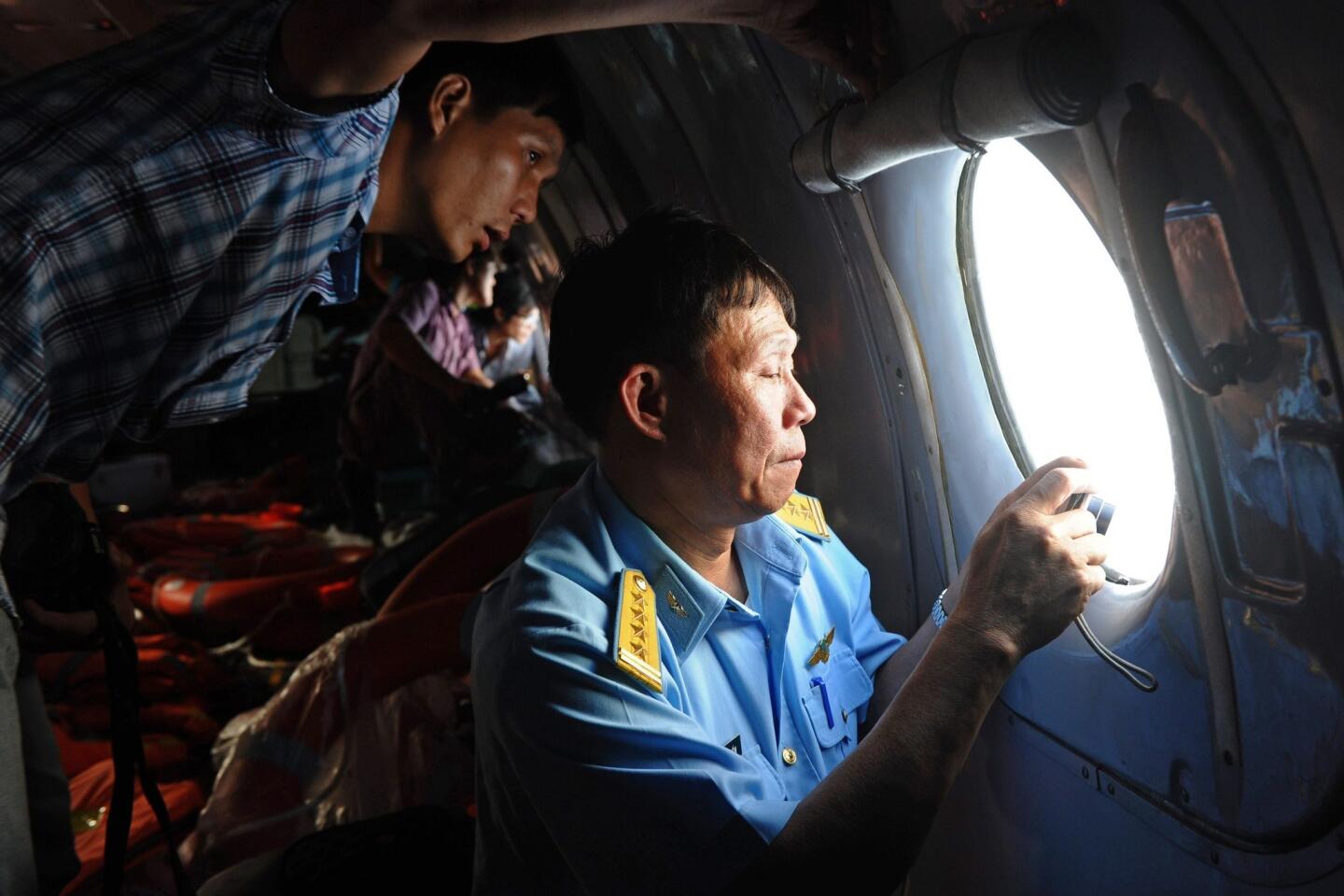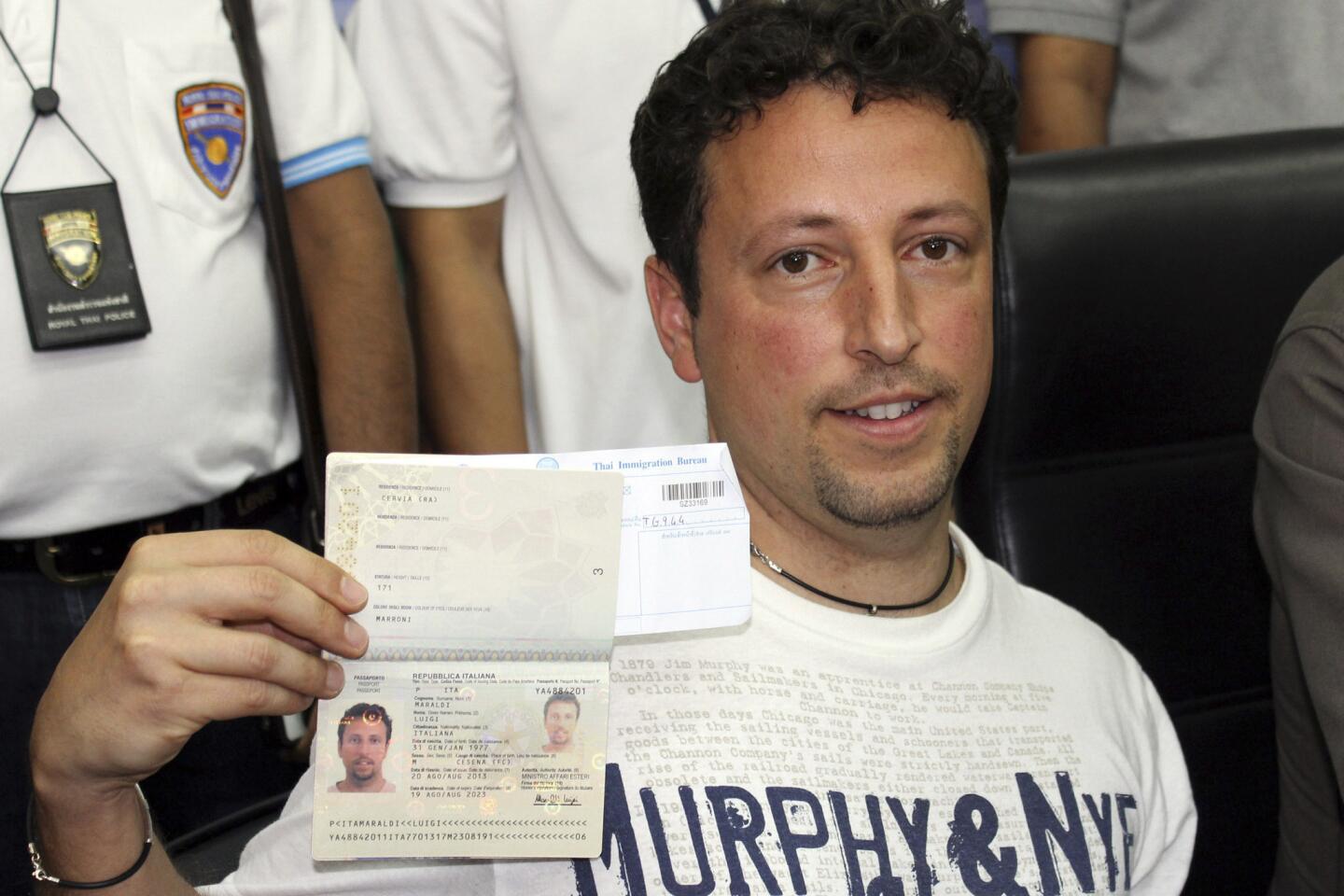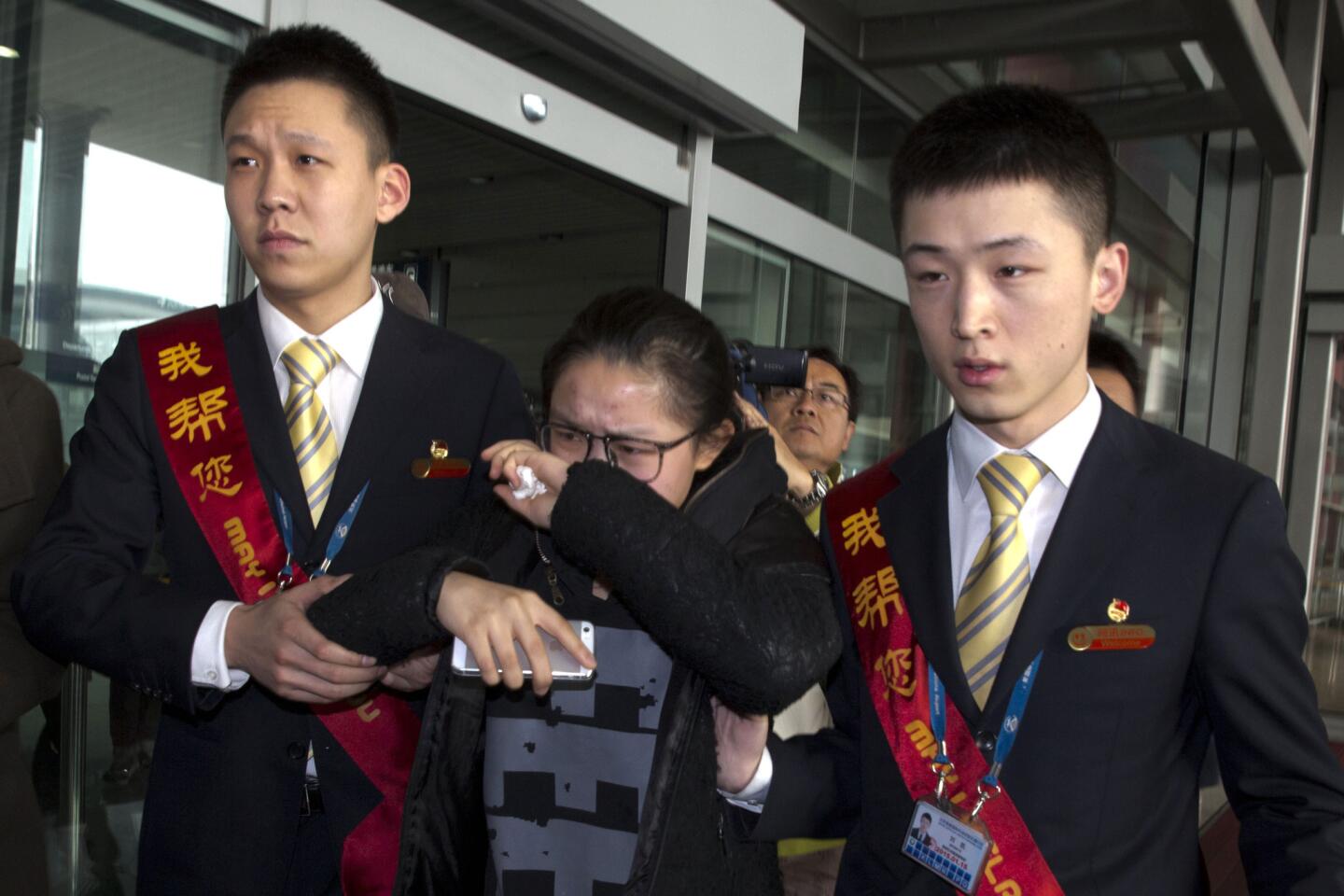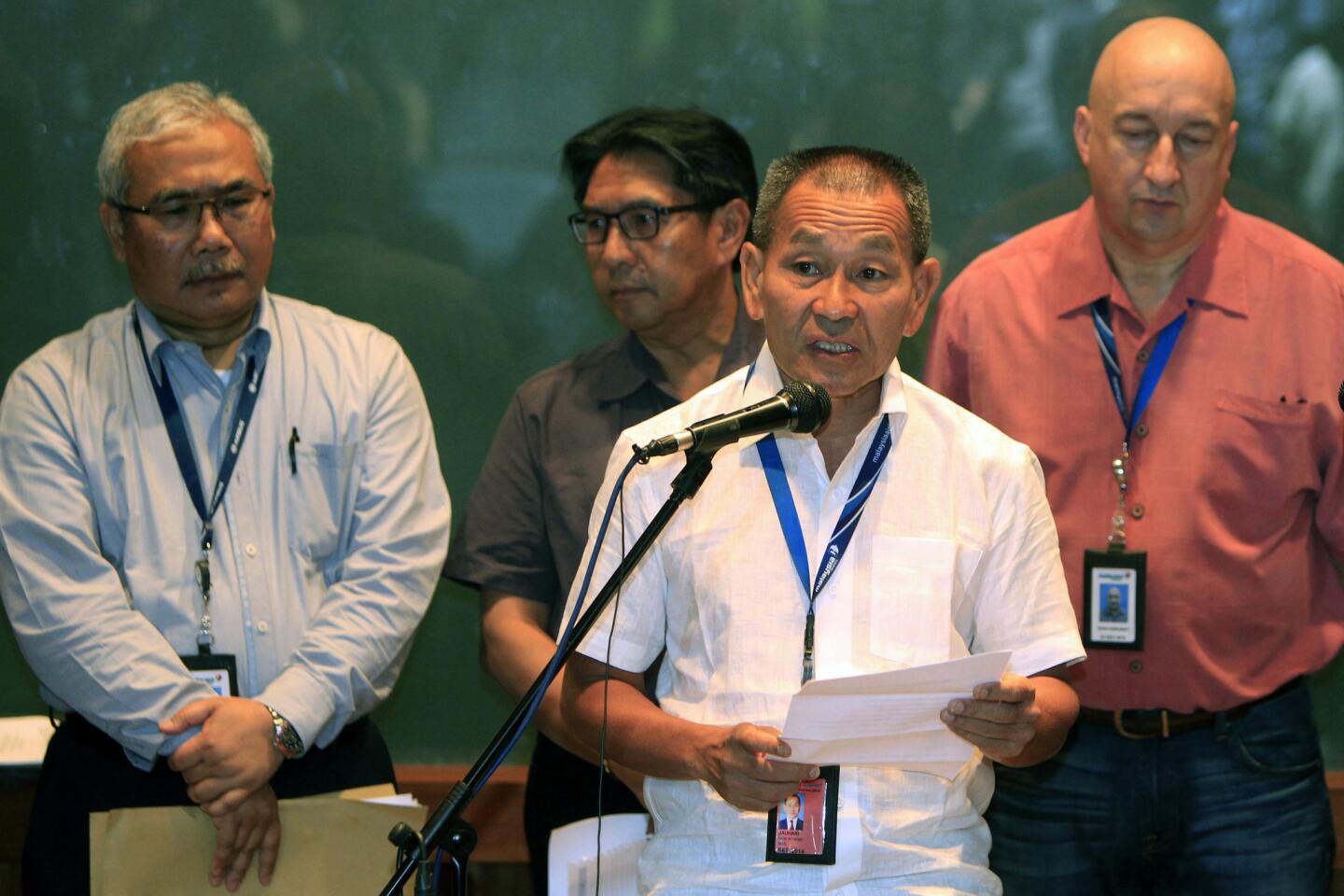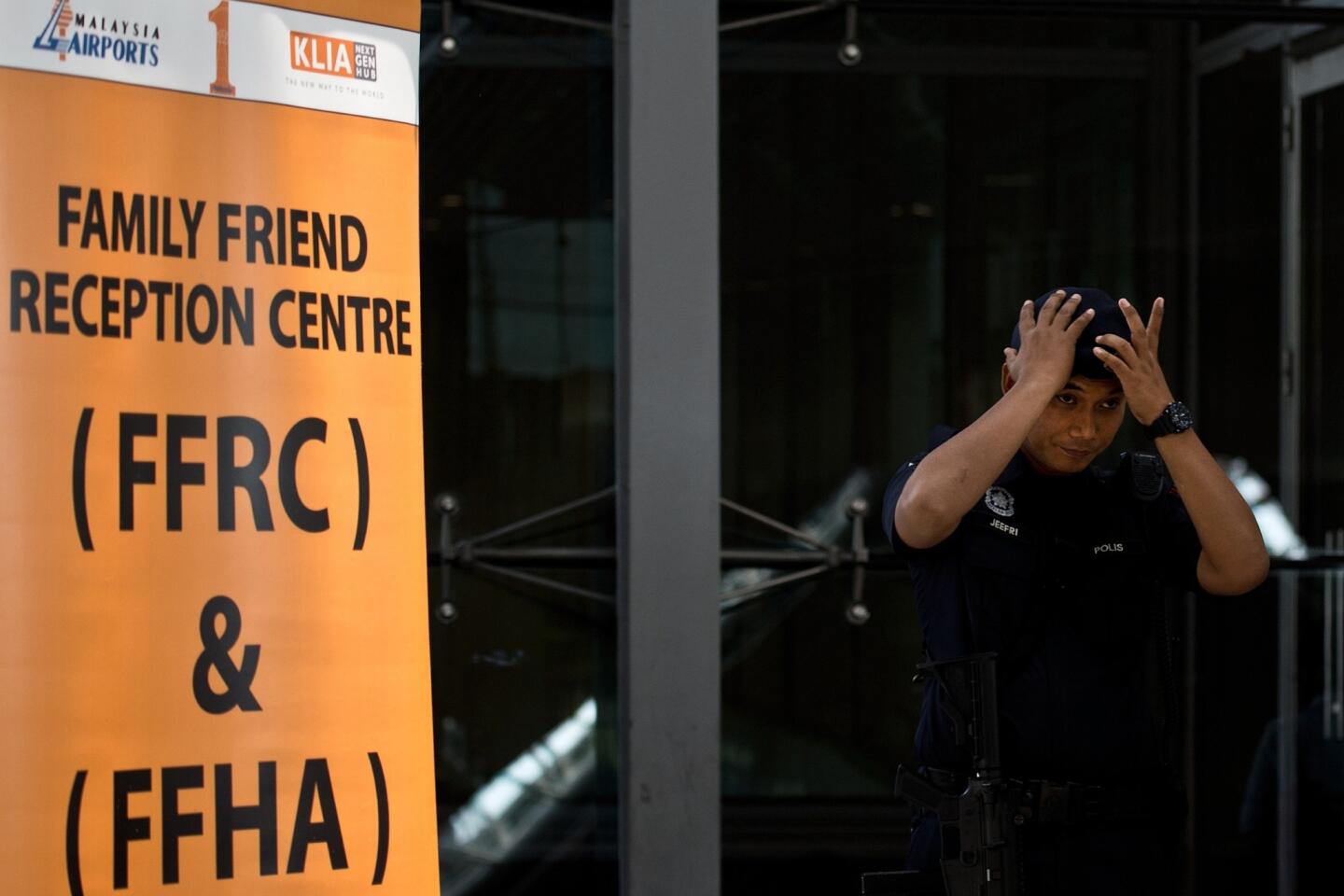All on board missing Malaysia jet now under scrutiny, officials say
- Share via
BEIJING — Like an Agatha Christie whodunit, the investigation into the disappearance of Malaysia Airlines flight 370 is now focusing on a finite circle of suspects — the 227 passengers and 12 crew members of the missing plane.
While reluctant to call it a hijacking, Malaysian officials now say they believe somebody inside the plane with expertise in the navigational and communications systems of the Boeing 777 diverted it from its Kuala Lumpur-to-Beijing flight path.
“In view of this latest development, Malaysian authorities have refocused their investigation into the crew and passengers on board,” Malaysian Prime Minister Najib Razak said at a news conference Saturday in Kuala Lumpur.
PHOTOS: Missing Malaysia Airlines plane
Among those who are coming under investigation are pilot Zaharie Ahmad Shah. The 53-year-old Zaharie is one of the airline’s most seasoned pilots, described by Malaysian newspapers as an “aviation geek” who owned a flight simulator at home and flew remote-control airplanes and helicopters as a hobby.
Copilot Fariq Abdul Hamid, 27, with the airline since 2007, has already been the subject of speculation because of an incident in 2011 in which he invited two young South Africa women into the cockpit during a flight, and according to the women, flirted, smoked cigarettes and posed for photographs.
Since the airliner vanished a week ago, investigators have been looking at the backgrounds of two passengers traveling on stolen passports. Both were young Iranian men. Pouria Nour Mohammed Mehrdad, 19, was booked through to Frankfurt and his mother was waiting for him there. Delavar Seyed Mohammed Reza, 29, boarded the flight together with Mehrdad, according to CCTV footage later made public, but had been booked to Copenhagen.
Investigators have said the two had no known links to terror organizations and appeared to be economic migrants trying to reach Western Europe.
Now, the rest of those on the flight are coming under scrutiny, transformed from victims to potential suspects. The largest number of passengers, 159, were Chinese nationals and most of the rest were Malaysians, with a few Ukrainians, Indians, Indonesians, Australians and three Americans. Expatriate Philip Wood, 51, worked for IBM and the two other Americans have been described as toddlers.
Among the Chinese were a group of artists and calligraphers returning home from an exhibition in Malaysia celebrating the “Chinese Dream.” One of them was Maimaitijiang Abula, a 35-year-old ethnic Uighur from Kashgar in western China. He’s been singled out for special attention by the Malaysian press because of the fears of violence surrounding the Uighur separatist movement in China. Some reports incorrectly identified him as an electrical engineer.
“It is important to profile all the passengers and crew. All the countries whose nationals were on that flight have to participate in the investigation so that they can narrow it down to who is responsible,” said Rohan Gunaratna, a Singapore-based terrorism expert. “It is very likely that more than one person was responsible and that there were others on the ground responsible as well.”
Malaysian and U.S. investigators have said that whoever diverted the airplane was familiar with its navigational and communications systems. The Aircraft Communications Addressing and Reporting System and transponder were both switched off within 50 minutes of takeoff — suspiciously, at a location between Vietnam and Malaysia where radar coverage is spotty.
Investigators say that the flight not only deviated from its planned route, but zigzagged in in a way that might have been designed to evade detection. Initially headed northeast toward Beijing, it then turned west over the Malacca Strait before turning again toward the Indian Ocean.
Flight 370 took off at 12:20 a.m. March 8 and disappeared about 1:30 a.m. Malaysian authorities say, however, satellites picked up signals from the flight until 8:11 a.m., which is also about the time it would have run out of fuel.
At his news conference in Sepang, outside Kuala Lumpur, Najib said investigators were focusing their search now on two air traffic corridors — a southern one heading from Indonesia to the southern Indian Ocean toward Australia; the other a northern corridor which would have taken the flight toward Kazakhstan and Turkmenistan.
“Due to the type of satellite data, we are unable to confirm the precise location of the plane when it last made contact with the satellite,” Najib said.
Aviation experts believe, however, it is unlikely that the plane headed northward because it would likely have been picked up by India’s land-based primary radar systems or that of other countries along the route, including Thailand and Myanmar.
“A Boeing 777 would always be picked up on primary radar coverage. It is not like a stealth bomber,” said Mikael Robertsson, cofounder of FlightRadar24, which tracks about 120,000 airline flights per day, in a telephone interview from Sweden. “If it flew over land, some country would have seen it on the radar. It is more likely it flew over water where it went undetected.”
In his statements, the Malaysian prime minister belatedly confirmed what U.S. intelligence has been suggesting for days — that the flight’s disappearance was the result of a deliberate act — a theory that Malaysia has been dismissing for much of the last week. The prime minister, however, declined to characterize the incident as a hijacking.
“Despite media reports that the plane was hijacked, I wish to be very clear we are still investigating all possibilities for what led Malaysian Air flight 370 to deviate from its flight path,” he said.
Malaysia’s announcement on Saturday came after days of fruitless searches along the flight path. At the last count, there were 14 nations participating in the search, deploying 43 ships and 58 aircraft.
State-run media in China, which sent a fleet of eight ships to search for the missing plane, reacted furiously to the belated acknowledgement by Malaysia of apparent foul play.
“Given today’s technology, the delay smacks of either dereliction of duty or reluctance to share information in a full and timely manner,” the Xinhua new agency complained in a stinging editorial. “And due to the absence — or at least lack — of timely authoritative information, massive efforts have been squandered, and numerous rumors have been spawned, repeatedly racking the nerves of the awaiting families.”
The news agency also accused the United States not being forthcoming about intelligence it had gathered about the flight.
PHOTOS: Missing Malaysia Airlines plane
In Beijing, family members of passengers who watched the Malaysian prime minister’s press briefing on a large-screen TV at a hotel reacted to the news of the suspected hijacking with astonishment and even a little relief.
“Do you think they might be alive?” one man was overheard asking another as they waited outside the conference room.
“They could be alive,” responded another.
barbara.demick@latimes.com
Nicole Liu of the Times Beijing bureau contributed to this report.
More to Read
Sign up for Essential California
The most important California stories and recommendations in your inbox every morning.
You may occasionally receive promotional content from the Los Angeles Times.


